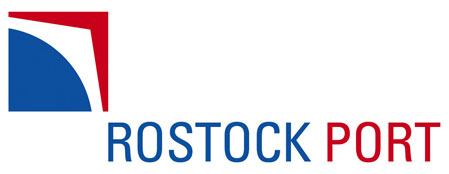The port of Rostock is the largest universal and only deep-sea port at the German Baltic Sea coast and one of the most important hubs for intermodal traffic in the southern Baltic Sea region. With high-frequency ferry and RoRo connections to Denmark, Sweden and Finland, efficient facilities for grain, coal, fertilizer, cement and general cargo handling as well as a modern oil port, it offers a comprehensive range and the highest quality of service for its customers. In particular, the handling facilities for payloads of up to 1,600 tons are unique in Northern Europe. Furthermore, Rostock with its sea side resort Warnemünde have developed to a major cruise port in the Southern Baltic sea.
The Federal State of Mecklenburg-Vorpommern and the Hanseatic City of Rostock are the owners of the Port of Rostock and their interests are represented by ROSTOCK PORT GmbH. The company's task is to develop the port in such a way that it meets the constantly increasing demands of the shipping industry and tourism. In close cooperation with the companies operating on site, ROSTOCK PORT GmbH creates the conditions for constantly improving the port's international competitive position. It concentrates its work on the forward-looking expansion of the infrastructure, its maintenance, marketing and an active settlement policy of industry-, logistics- and cargo handling companies.
Water level and ice conditions
Tides do not exist here, however, strong winds from the south may lower the water level by up to 1.5 m, and high winds from the north may raise the water level by up to 1.5 meters.
The navigable water is kept open as long as possible in winter and only very seldom freezes over completely.
Quay length and berths
The total quay length amounts to over 11,000 m, and there are 49 berths available. 29 of these berths are special berths for ferries (5), roll-on/roll-off vessels (5), coal/ building material (4), cement (1), grain (3), fertilizer (1), heavy cargo (3), liquid cargo (6) and chemicals (1).
Area
Rostock is one of the largest German Baltic Sea ports with an area of approx. 750 hectares. Sufficient reserve areas allow for a flexible reaction to all requirements of the national and international economy.








